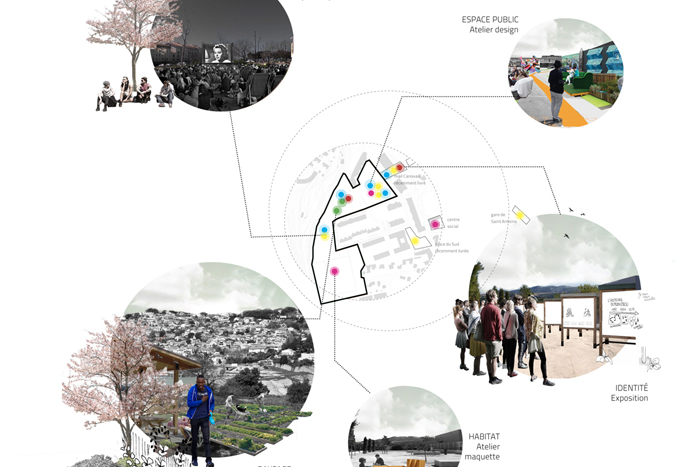PROJECTS-PROCESSES
Manifesto
Bernd Vlay (AT)
with the participation of the Scientific Commmittee's members
architect, urbanist, teacher and member of Europan's scientific committee
StudioVlayStreeruwitz, Vienna (AT) - www.vlst.at
This article introduces the Manifesto-Guide of Projects-Processes, the aim of which is to express and celebrate this principle of irreducible reciprocity, in Europan projects, between the idea and its implementation.
The Manifesto-Guide of Projects-Processes of Europan has been published on the occasion of the E15 Cities & Juries Forum held in Innsbruck (AT) in Oct. 2019
Manifesto-Guide for projects-processes
A guide is usually a manual. It instructs people how to handle operations that are necessary to comply a task.
The higher the comfort of handling, the more successful the guide: the best instructions are the ones that can be followed most easily. A guide is most rewarding if it is most comfortable.
However, the Europan Guide to Accompany Ideas into Implementation is of a different nature. It can neither be based on applying proven recipes nor on imitating good practices. The way to handle it is turned upside down. It promotes alertness instead of comfort. Instead of giving instructions to follow, it is a toolkit that invites for potential actions to be taken, presuming that people adopt a special attitude: to use the guide successfully –i.e. to make the guide work– means to improvise with the content, to creatively apply it each time in a specific way: the guide has to be performed in order to work.
This guide does not propose pre-assembled models or procedures. Rather, it is an open source product that is enriched by the experiences and skills of its users, adapting to the different social, economic and institutional contexts. It proposes a "what if” model, suggesting protocols that give differentiated indications, which depend on the different issues asked by the cities that want to take the courageous and creative path of urban regeneration.
In Europan’s vision, implementation is a crucial “pedagogical” asset, able to ground the winning projects. The guide should therefore contribute to the necessary acculturation and empowerment of all involved actors, boosting their capacity to be agents of transformation.
Performing the guide successfully requires, on one hand, a respective screenplay with an ambitious agenda (A), and on the other, skilful and enthusiastic performers, who are ready to get engaged (B).
(A) AMBITIOUS AGENDA FOR TODAY AND TOMORROW…
A range of contemporary conditions challenges the familiar agendas of architecture, urban design/planning and landscape architecture as material design practices that address our environment. Think of the increasing conflicts on resources, the perturbing rise of ecological disasters, the sharpening development of economic polarization, the continuous rise of social imbalance, exclusion and marginalization, the sense of abandonment of the non-metropolitan population, or the uneven accessibility to housing, work, education and public services. The pervasive presence of human activities since the industrial revolution has been accelerating territorial, social and climate changes, generating an enormous human footprint on the planet, a steady erosion of resources. It has diminished the capacity of urban settlements to entertain ecological and productive relationships with rural land; it has sedated the productive and generative capacity of local manufacturing; and it has neglected the regenerative value of taking care of places in the sense of maintaining and fostering circular processes.
All these examples reflect a fundamental, global crisis that operates on multiple scales. Within this crisis, global forces directly affect local and regional conditions, and vice versa, establishing a multi-layered interface of multi-scalar influences. Each single location, no matter how small, has become a “hybrid set”, disposing of comprehensive, complex, sometimes conflictual narratives. In order to be able to offer a future beyond the actual crisis, these narratives, as well as the way they intermingle, have to be carefully discovered and sensitively addressed. Their “multi-dimensionality” unsettles familiar patterns of space, such as city/countryside, place/territory, urban/rural, global/local, public/private, visible/invisible, etc., manifesting a dimensional depth, all at once social, cultural, ecological, physical, and (geo-)political.
Sharing and celebrating the opportunity of unfamiliarity through the concept of a collective project is therefore the basic principle for all actors who believe in the curative power of architecture, urban design and landscape architecture. Innovative and experimental approaches are inevitable. Nevertheless, they can only satisfyingly address such crisis if they animate an extended field of disciplines through their very design, crossing natural sciences with humanities and even judiciaries, so as to trigger a shared awareness about the imperative of the collective project, growing out of the disciplinary field. This notion of collective project or shared project is operative in Europan.
Architecture, urban design, and landscape architecture gain their full curative potential exactly through releasing a comprehensive co-production of transformations regarding our living environment: territorial and infrastructural authorities, politicians, developers, as well as other professions and all kinds of affected users become co-authors of a collective project, inasmuch as they are ready to share the concerns about the necessity to act in an unfamiliar way in order to act successfully.
Such an ambitious agenda requires a shared commitment, as all involved actors embrace the societal responsibilities of taking care about the city. Their shared commitment provides a powerful ground to achieve equitable access for all to goods and general interest services, whether it is simply affordable housing, transport infrastructure, access to health services, education or culture, or even employment. The project of comprehensive co-production is therefore one of the keys for an inclusive and ecological city: the common ground of shared commitment finally encourages public spaces open to otherness; and at the same time, its shared operation will considerably improve the city's metabolism.
See the whole process of Garten>HOF: here
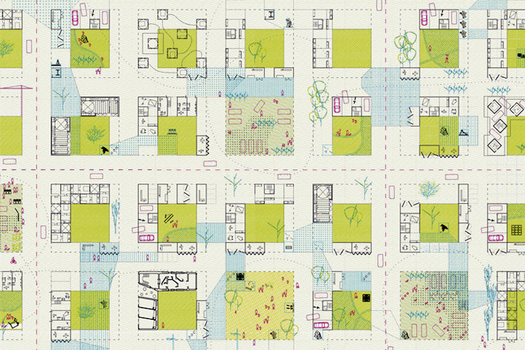
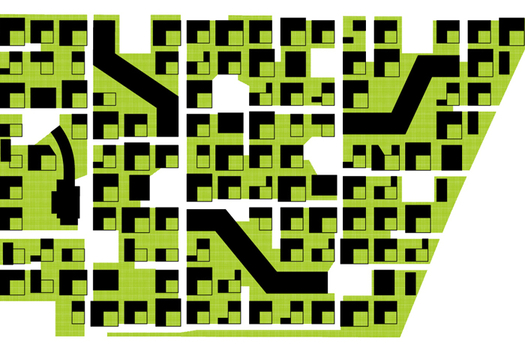
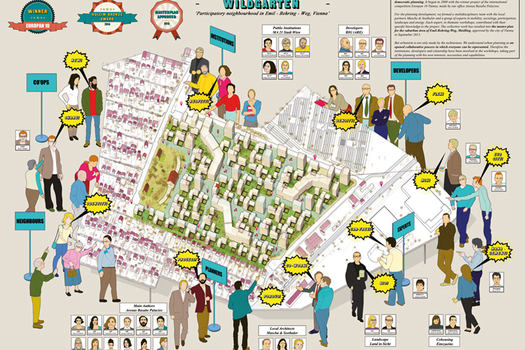
Concerning the ambition to match the agenda, all involved actors share the passion to reconsider their everyday practices. They are ready to get proactively involved in a collective project that responds to the most urgent question of our times: How to contribute to the cure of the symptoms of the present crises in order to make a worthy future happen?
Europan’s ambitious agenda is about giving rightfully contextualized responses to this most urgent question by means of the collective project that grows out of the disciplinary field of architecture, urban and landscape design. This response is based on a figure of action demanding a collective “re-formation” of thinking and acting performed by a spectrum of engaged actors, who are the guide’s main addressees.
The guide shall therefore…
…encourage young professionals of architecture, urban and landscape design
to have them understand that their contributions are concrete site-related translations of the aforementioned agenda, but that they can only substantially contribute to it if they integrate the conceptualization of a process that “manufactures” the project’s unfolding in the site-related realities after the competition phase, aiming to establish a durable process that is able to take care of the inclusive city.
Winning ideas need to intensify their engagement with the site.
…instruct site managers and developers, who are responsible for the post-competition phase
about skills and modes to successfully “design” the transition from competition to implementation, understanding the idea of feasibility as a progressive step-by-step procedure, the progression mode of which introduces a strategic and tactical bandwidth that goes beyond the classic stage set of masterplan implementations or architectural realizations, allowing the competition site to play a public role for the rest of the city.
Winning ideas are not standard, they are game changers; implementation needs to be imagined as we go along.
…animate Europan's National and European structures
to extend their working field: taking care of Europan’s agenda requires to go beyond the organization of the competition phase, providing a platform for Europan’s figure of action.
As they take the role of great conductors for the competition phase, they have to take the role of successful intermediary of the winning ideas in the transitional phase, taking them from the competition stage to the implementation process: e.g. godfathers who take care of the project and support the designers in the various phases, or commissions, responsible for ensuring and perpetuating the quality of the projects.
Winning ideas need mentors to conduct game-changing discussions.
…and finally, provide a substantial insight to all involved actors
the capacity to imagine how the arrival of ideas –sometimes coming from far away– can be successfully translated to a local process of collaborative realization, involving all the concerned actors in synergy with one another, and not in conflict.
Winning ideas need the active collaboration of everyone.
See the whole process of Catalogue for Dwelling on the Time: here
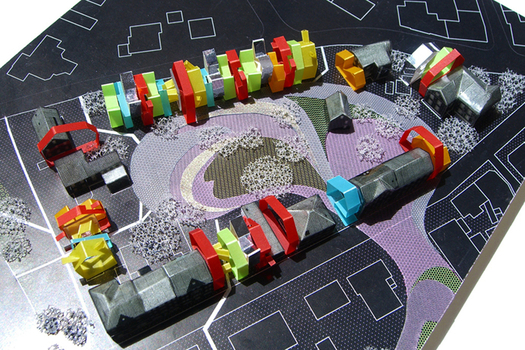
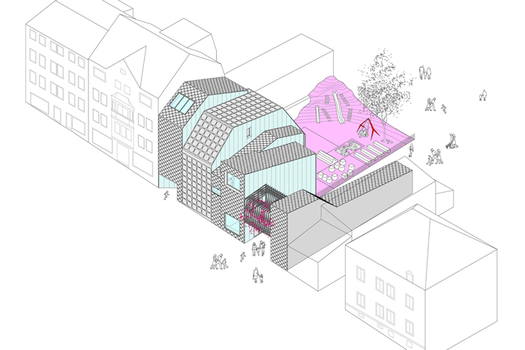
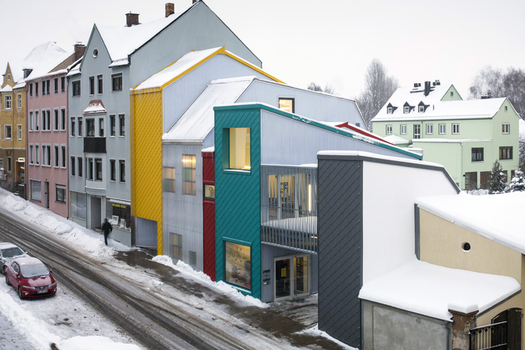
What would be the most appropriate operative frame for the aforementioned material practices and actors? Without a doubt, the concept of the urban-architectural project might be the most accurate format. It inscribes not only the interweaving of scales, relations and iterability right into the heart of the architectural project, but also the concerns and expertise of a multi-layered approach, which opens up the field of architecture to reflect the multidimensional condition of the crises. Thus, architecture becomes an intrinsic part of the urban project, including the design of public space, landscapes, territories and infrastructures. At the same time, it introduces the development in time (process) and the political, social, cultural, environmental discourses as its main ingredients.
Even if each single task of the urban-architectural project is in itself multi-scalar, its contextual framework and scale do vary. They constitute a diversity of possible responses with different “intervention spheres”, inducing specific operations and configurations of actors, which can be meaningfully grouped according to three spectrums of scales:
S-Scale: Mission of Impact
Europan projects on/for small sites always have the mission to unfold larger effects on the urban scale. For that matter, the design can address any kind of content, figure or strategy, provided it transforms the project’s S-scale into a comprehensive interaction manoeuvre.
M to L-Scale: Mission of Articulation
Europan projects on medium and large sites always have the mission to respond to the site’s specific logic and narrative with a concept that is able to articulate the visionary link between the site and its surrounding environment – a double added-value, both for the site and its adjoining urban context.
XL-Scale: Mission of the Translocal
Europan projects on extra-large sites always have the mission to consider the co-evolutions of cultural, ecological, infrastructural and geopolitical stakes on a large scale of a territory, translating them into an agenda that makes them concretely operate, but at the same time takes advantage of their potential ecological synergies – simultaneously local and territorial (e.g. diverse punctual interventions that operate in multiple and contextualized ways).
See the whole process of Concomitance: here

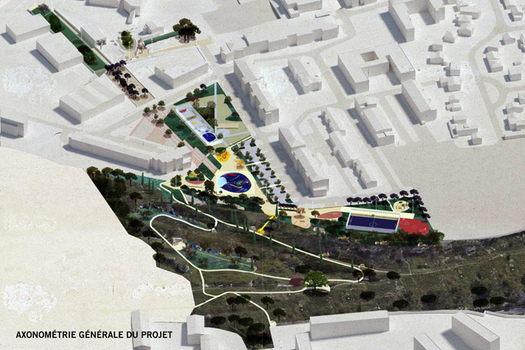
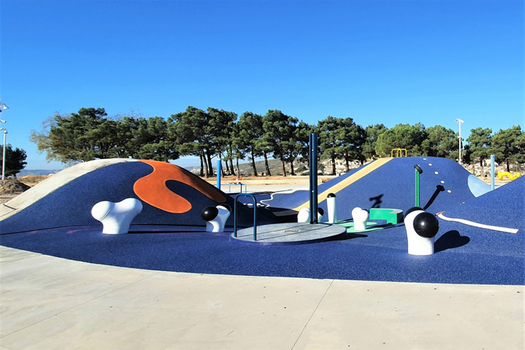
The empowered urban-architectural project becomes a tool in the hands of the ones included, empowering project actors willing to instigate such collective project. Therefore, Europan has, with full awareness, established a paradox: the combination of a “competition of ideas” with the “implementation process”. In the history of the architectural competition these two spheres have so far been strictly separated to avoid mutual contamination: the “pure” competition of ideas reinforces the myth of the idea as a phenomenon that is free, only if it is liberated from the burden of physical implementation. The “pure” competition of implementation, on the other hand, reinforces the myth of implementation as a limited sphere of routine competencies, the success of which is based on the experienced expertise of actors and instruments.
Europan, on the contrary, promotes the mutual infection of idea and implementation in order to increase the competencies of the urban-architectural project and its actors. The shortcut between the sphere of ideas and the one of implementations radically transforms the concept of the idea: it becomes the driving force of a process that extends to the sphere of the “real”, while including the idea as its intrinsic element.
The mutual infection of idea and implementation makes Europan projects act on unconventional levels. A crucial component is therefore the measurement of the impacts of the transformations produced in the course of implementation. Measuring these new impacts is highly important, as they allow us to understand and reveal the project’s idea about the specific performance of the development process.
Europan’s concept of implementation anchors the “making of reality” in the explorative power of ideas: an idea is an idea only if it is in the state of becoming, if it is linked to the implementation process. Therefore, Europan’s actors have to face another unique figure of action: “Implementation begins with the preparation of the competition”.
The irreducible reciprocity between idea and implementation makes the urban-architectural project a collective project, able to meet Europan’s ambition. It introduces a critical amount of unfamiliarity, allowing new ways of practicing, improbable proximities between project actors, and intimate relations between project and process. In addition, it enables extended insights about the idea of implementation itself, operating in the realm of the real far beyond its mere physical manifestation.
If idea and implementation are an inseparable couple, the transition from idea to implementation must be reconsidered. The stereotype figure of a huge gap between the end of the competition phase and the beginning of the implementation phase results from a wrong notion of separation between competition and implementation, ignoring the project process figure as one continuous vector of becoming. Successfully going ahead depends on a chain of synergies in time, starting with the preparation of the competition, and sometimes even before, when approaching possible Europan partners for an upcoming Europan session. Any kind of obstacles and hurdles might appear anytime during the continuous process of becoming.
Yet, the awareness of the inseparable relationship between competition and implementation introduces the implementation process as a kind of iterative transition, immunizing Europan against the fatal and insuperable “mega gap” between competition and implementation. This “mega gap” is a myth based on the belief that Europan is primarily a competition. STILL: Europan is a platform of collaborative processes, operating with exciting project processes that range from the initial proposal of the site to manifold implementation stages. In order to match Europan’s agenda, the project design and the realization steps must intimately interweave, providing a synergetic triangle of context, idea and process: an incremental, time-oriented, tactical and flexible “master program” binding together idea and implementation as one synergetic operational agenda, which asks for a new vision of “making” the Europan project, going far beyond discrete and familiar development patterns such as masterplans.
The guide invites the readers to perform the art of overcoming thresholds – any kind and anytime. In other words:
Successfully performing the Europan Guide means sharing Europan’s ambition through celebrating, with all available means, the irreducible reciprocity of idea and implementation.






